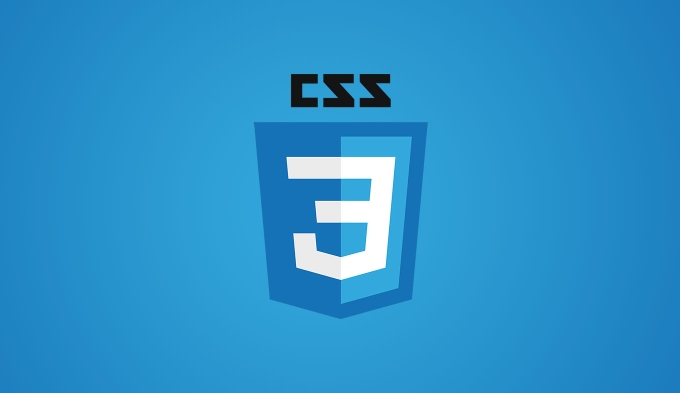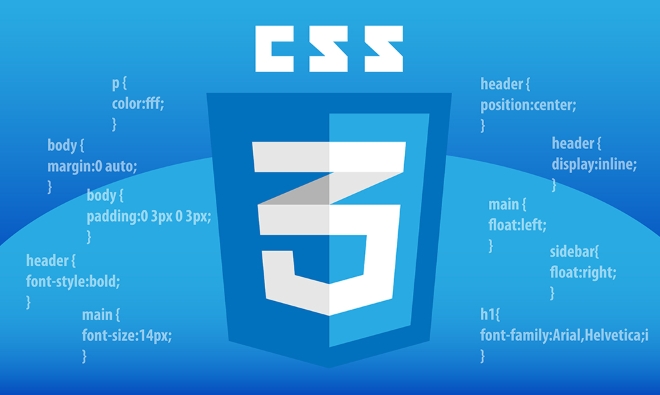Go to fonts.google.com and select a font like Open Sans. 2. Use either @import in CSS or <link> in HTML to include the font, with <link> being better for performance. 3. Customize the font by adjusting weights, styles, and subsets in the URL. 4. Always provide a fallback font stack like 'Open Sans', Arial, sans-serif for reliability. 5. To use multiple fonts, separate them with a pipe (|) in the URL and apply them to different elements in CSS. This ensures proper loading and visual consistency across devices and networks.

Using Google Fonts in CSS is simple and widely used to enhance the visual appeal of websites. Here's how to do it properly:

1. Choose a Font from Google Fonts
Go to fonts.google.com, browse or search for a font you like (e.g., Roboto, Open Sans, Lato), and click on it. You’ll see options for weights, styles, and language support.
2. Get the @import or <link> Code
After selecting a font, Google provides two ways to include it:

Option A: Use @import in CSS (recommended for simplicity)
Copy the @import URL from Google Fonts and place it at the top of your CSS file:
@import url('https://fonts.googleapis.com/css2?family=Open Sans:wght@400;700&display=swap');?? Always put
@importbefore any other CSS rules (except@charset).
Then apply the font in your CSS:
body {
font-family: 'Open Sans', sans-serif;
}Option B: Use <link> in HTML (better for performance)
Add the <link> tag inside the <head> section of your HTML:
<link href="https://fonts.googleapis.com/css2?family=Open Sans:wght@400;700&display=swap" rel="stylesheet">
Then use the font in your CSS just like above:
body {
font-family: 'Open Sans', sans-serif;
}? Why <link> is better: It avoids a render-blocking delay that @import can cause since the browser fetches the font earlier.
3. Customize the Font (Weights, Styles, Subsets)
When copying the link or import URL, you can customize:
- Weights:
wght@400;700means regular and bold - Styles: Italic can be added with
ital,wght@0,400;1,400 - Language subsets: e.g.,
&subset=latin-ext,cyrillic
Example with multiple styles:
@import url('https://fonts.googleapis.com/css2?family=Open Sans:ital,wght@0,400;0,700;1,400&display=swap');
body {
font-family: 'Open Sans', sans-serif;
}
em {
font-style: italic;
}4. Always Provide a Fallback Stack
Even with Google Fonts, network issues or slow loading can happen. Always include a generic fallback:
font-family: 'Open Sans', Arial, sans-serif;
This ensures your text remains readable if the web font fails to load.
Bonus: Using Multiple Fonts
You can load multiple fonts by separating them with a pipe (|) in the URL:
<link href="https://fonts.googleapis.com/css2?family=Open Sans&family=Montserrat:wght@700&display=swap" rel="stylesheet">
Then use them in different elements:
h1 {
font-family: 'Montserrat', sans-serif;
}
p {
font-family: 'Open Sans', sans-serif;
}That’s it. Basically just pick, link (or import), and apply. Not complicated — but easy to mess up if you skip the fallback or put @import in the wrong place.
The above is the detailed content of How to use Google Fonts in CSS?. For more information, please follow other related articles on the PHP Chinese website!

Hot AI Tools

Undress AI Tool
Undress images for free

Undresser.AI Undress
AI-powered app for creating realistic nude photos

AI Clothes Remover
Online AI tool for removing clothes from photos.

Clothoff.io
AI clothes remover

Video Face Swap
Swap faces in any video effortlessly with our completely free AI face swap tool!

Hot Article

Hot Tools

Notepad++7.3.1
Easy-to-use and free code editor

SublimeText3 Chinese version
Chinese version, very easy to use

Zend Studio 13.0.1
Powerful PHP integrated development environment

Dreamweaver CS6
Visual web development tools

SublimeText3 Mac version
God-level code editing software (SublimeText3)

Hot Topics
 How to use PHP to build social sharing functions PHP sharing interface integration practice
Jul 25, 2025 pm 08:51 PM
How to use PHP to build social sharing functions PHP sharing interface integration practice
Jul 25, 2025 pm 08:51 PM
The core method of building social sharing functions in PHP is to dynamically generate sharing links that meet the requirements of each platform. 1. First get the current page or specified URL and article information; 2. Use urlencode to encode the parameters; 3. Splice and generate sharing links according to the protocols of each platform; 4. Display links on the front end for users to click and share; 5. Dynamically generate OG tags on the page to optimize sharing content display; 6. Be sure to escape user input to prevent XSS attacks. This method does not require complex authentication, has low maintenance costs, and is suitable for most content sharing needs.
 PHP creates a blog comment system to monetize PHP comment review and anti-brush strategy
Jul 25, 2025 pm 08:27 PM
PHP creates a blog comment system to monetize PHP comment review and anti-brush strategy
Jul 25, 2025 pm 08:27 PM
1. Maximizing the commercial value of the comment system requires combining native advertising precise delivery, user paid value-added services (such as uploading pictures, top-up comments), influence incentive mechanism based on comment quality, and compliance anonymous data insight monetization; 2. The audit strategy should adopt a combination of pre-audit dynamic keyword filtering and user reporting mechanisms, supplemented by comment quality rating to achieve content hierarchical exposure; 3. Anti-brushing requires the construction of multi-layer defense: reCAPTCHAv3 sensorless verification, Honeypot honeypot field recognition robot, IP and timestamp frequency limit prevents watering, and content pattern recognition marks suspicious comments, and continuously iterate to deal with attacks.
 What are common CSS browser inconsistencies?
Jul 26, 2025 am 07:04 AM
What are common CSS browser inconsistencies?
Jul 26, 2025 am 07:04 AM
Different browsers have differences in CSS parsing, resulting in inconsistent display effects, mainly including the default style difference, box model calculation method, Flexbox and Grid layout support level, and inconsistent behavior of certain CSS attributes. 1. The default style processing is inconsistent. The solution is to use CSSReset or Normalize.css to unify the initial style; 2. The box model calculation method of the old version of IE is different. It is recommended to use box-sizing:border-box in a unified manner; 3. Flexbox and Grid perform differently in edge cases or in old versions. More tests and use Autoprefixer; 4. Some CSS attribute behaviors are inconsistent. CanIuse must be consulted and downgraded.
 How to build a PHP Nginx environment with MacOS to configure the combination of Nginx and PHP services
Jul 25, 2025 pm 08:24 PM
How to build a PHP Nginx environment with MacOS to configure the combination of Nginx and PHP services
Jul 25, 2025 pm 08:24 PM
The core role of Homebrew in the construction of Mac environment is to simplify software installation and management. 1. Homebrew automatically handles dependencies and encapsulates complex compilation and installation processes into simple commands; 2. Provides a unified software package ecosystem to ensure the standardization of software installation location and configuration; 3. Integrates service management functions, and can easily start and stop services through brewservices; 4. Convenient software upgrade and maintenance, and improves system security and functionality.
 Describe the `vertical-align` property and its typical use cases
Jul 26, 2025 am 07:35 AM
Describe the `vertical-align` property and its typical use cases
Jul 26, 2025 am 07:35 AM
Thevertical-alignpropertyinCSSalignsinlineortable-cellelementsvertically.1.Itadjustselementslikeimagesorforminputswithintextlinesusingvalueslikebaseline,middle,super,andsub.2.Intablecells,itcontrolscontentalignmentwithtop,middle,orbottomvalues,oftenu
 What is the accent-color property?
Jul 26, 2025 am 09:25 AM
What is the accent-color property?
Jul 26, 2025 am 09:25 AM
accent-color is an attribute used in CSS to customize the highlight colors of form elements such as checkboxes, radio buttons and sliders; 1. It directly changes the default color of the selected state of the form control, such as changing the blue check mark of the checkbox to red; 2. Supported elements include input boxes of type="checkbox", type="radio" and type="range"; 3. Using accent-color can avoid complex custom styles and extra DOM structures, and maintain native accessibility; 4. It is generally supported by modern browsers, and old browsers need to be downgraded; 5. Set accent-col
 How to compile SCSS to CSS?
Jul 27, 2025 am 01:58 AM
How to compile SCSS to CSS?
Jul 27, 2025 am 01:58 AM
InstallDartSassvianpmafterinstallingNode.jsusingnpminstall-gsass.2.CompileSCSStoCSSusingthecommandsassinput.scssoutput.css.3.Usesass--watchinput.scssoutput.csstoauto-compileonsave.4.Watchentirefolderswithsass--watchscss:css.5.Usepartialswith_prefixfo
 How to change text color in CSS?
Jul 27, 2025 am 04:25 AM
How to change text color in CSS?
Jul 27, 2025 am 04:25 AM
To change the text color in CSS, you need to use the color attribute; 1. Use the color attribute to set the text foreground color, supporting color names (such as red), hexadecimal codes (such as #ff0000), RGB values (such as rgb(255,0,0)), HSL values (such as hsl(0,100%,50%)), and RGBA or HSLA with transparency (such as rgba(255,0,0,0.5)); 2. You can apply colors to any element containing text, such as h1 to h6 titles, paragraph p, link a (note the color settings of different states of a:link, a:visited, a:hover, a:active), buttons, div, span, etc.; 3. Most







